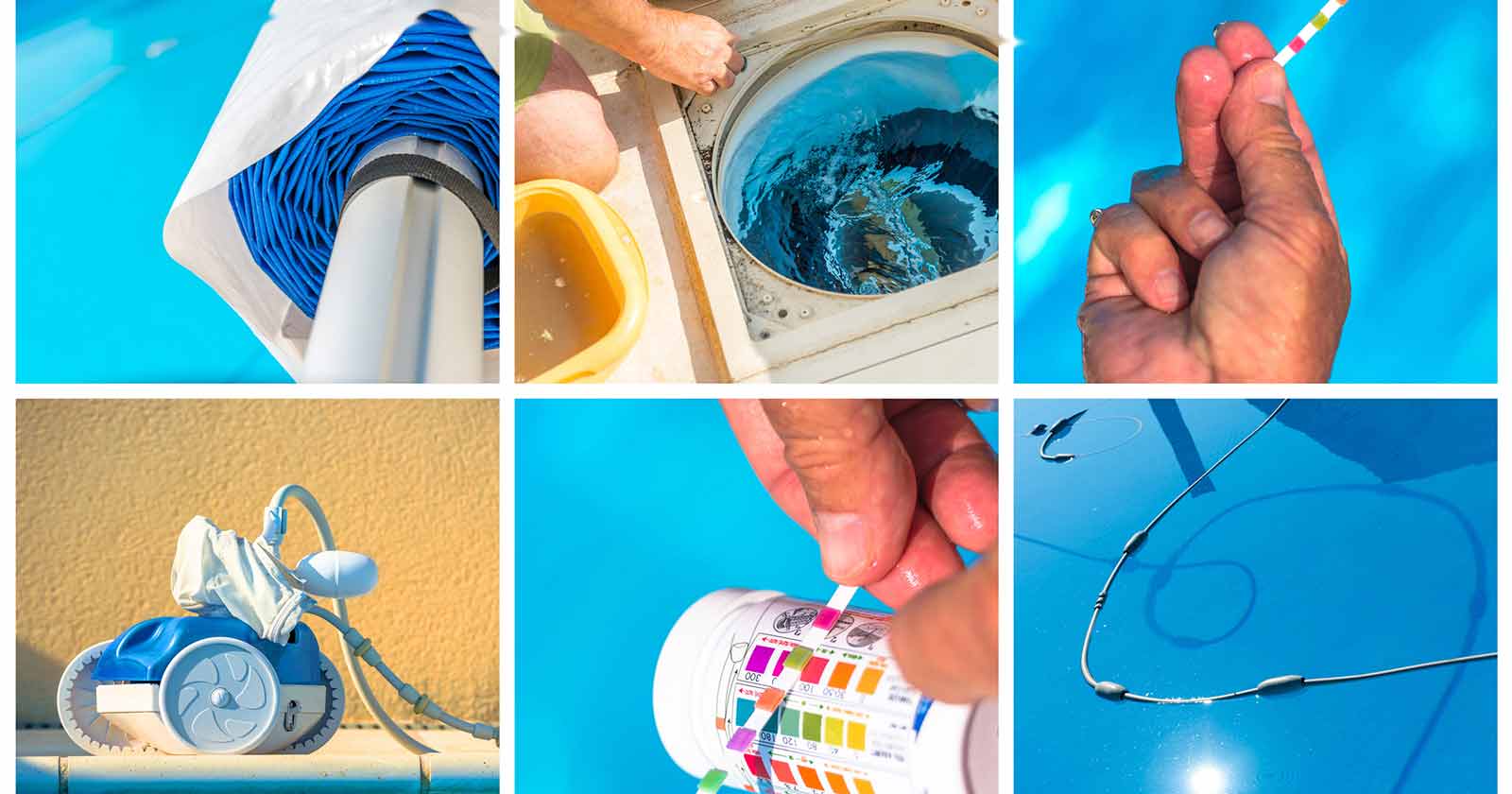
Even though we have a longer swimming season in Florida, our pools still get the bulk of their use during the summer. Hitting the pool is a sure fix for dealing with the heat and humidity. And, it’s hard not to invite friends, family, and neighbors over to beat the heat too. However, when your pool is the most popular place on the block, you need to make sure and keep up with pool maintenance. And—we hope we aren’t the bearer of bad news here—when your pool is used heavily, you’ll have to work harder.
Not that pool maintenance is extremely hard, of course, but it does involve your time. If you fall behind on keeping up with maintenance, algae and other common problems can sneak up on you. You need to make sure your maintenance routine accommodates the amount of use your pool gets.
Here are a few tips for keeping your pool crystal clear all season long.
Keep a close eye on chlorine
Heavy swimming coupled with increased heat can cause chlorine to dissipate and burn off more quickly. You should shock your pool at least once a week. And, you may need to do it more often if you have heavy swimmer loads every day.
It’s a good idea to shock your pool after a good rain passes through as well. Shocking the pool kills off any buildup of contaminants. It allows you to maintain your chlorine levels with the least amount of —well, you insert the word that fits here. The description tends to fluctuate depending on personalities if you know what we mean.
There are two primary methods for maintaining chlorine levels. Shocking the pool is one, of course, but adding chlorine tablets to a floater and placing it on the water’s surface is another. They’re found in almost every backyard pool.
If you choose to use a saltwater system, it changes the salt to chlorine and the process repeats over and over as water cycles through the system. Homeowners report rarely—if ever—needing to make adjustments to chlorine levels.
Derail debris
This step in the maintenance process probably requires the most work. However, how often you need to perform the task depends on several factors. When debris is left in the pool, it begins to break down immediately. This causes algae growth, ring-around-the-pool, and lowers chlorine levels.
You need to set aside time for skimming, brushing, and emptying the filter baskets and skimmer at least once a week. However, if the kids are running back and forth through the yard all day from the house to the pool, odds are that skimming could be a daily necessity.
For that matter, having the mower pointed in the wrong direction could equal a mess too. And since we’re on the subject, chasing grass particles around on the water after the fact gets time-consuming!
Storm debris is often warded off with your cover, but if you didn’t think to put it on…
In addition to dirt and yard waste, suntan oils and lotions are a huge contributor to ring-around-the-pool. You can’t ban them, but keep a head’s up because they can contribute to chlorine breakdown too.
Many homeowners choose to enclose their pool area. It cuts down on the amount of debris that gets in the pool tremendously! What’s more, pool enclosures keep bugs out too! You won’t find them floating on your pool’s surface and, better yet, they won’t be biting you and yours!
These reasons, in addition to the added sense of privacy, are why many homeowners are making the decision to enclose their pools.
Pump it up
It’s important to cycle your pool water through your filter system at least once a day. It’s recommended that you leave your pool pump running for at least eight hours per night.
That’s because water turnover is an essential part of keeping your pool clean and clear. Filtering the water catches any debris inside the filter. If you don’t run your filtering system long enough, the water may soon begin to look cloudy.
When it’s especially hot outside, you need to run your system for longer than eight hours.
Testing, testing
Again, the number of times per week that you test your pool water depends on how heavily it’s used. Typically, once a week is often enough, but if your pool is the hangout spot, testing two or even three times a week isn’t out of the question.
You’ll find that the more often that you test allows you to pick up on trends. For example, you may determine that a certain amount of time passing equates to how often you need to correct your pH levels.
Routine is the key
Pool maintenance isn’t difficult. Determining how often you need to perform the tasks is the secret to having a sparkling pool all season long.
The number of swimmers that are in the water each day directly relates to how often maintenance needs to be performed. If you tend to be a procrastinator, instead of just penning in the time on your kitchen calendar, set an alarm on your phone!
Staying ahead of pool maintenance is far less work than turning a green pool blue again. It keeps the kids in the water more often too. They sure love it there, don’t they?
Just sayin’
